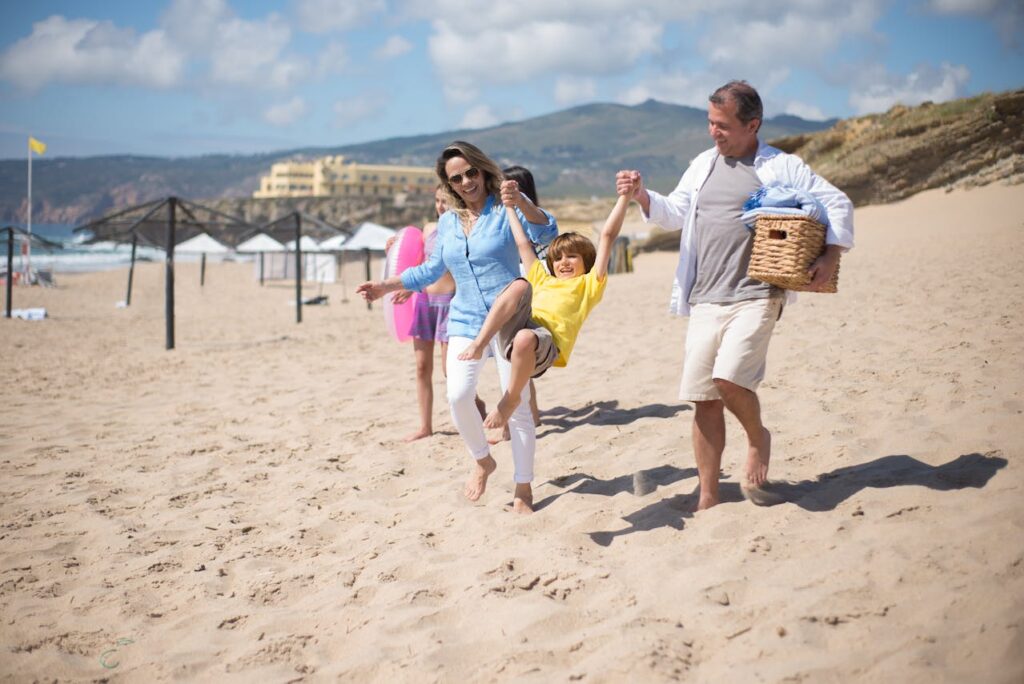Constructing a Solid Haven for Family Outings and Excursions
Constructing a Solid Haven for Family Outings and Excursions Picture this: You’re on a serene family hike, admiring the azure skies while your kids gleefully explore nature. But with one wrong step along an unmarked trail, tranquility gives way to distress. Preparedness is the unsung hero of every memorable family escapade—ensuring spontaneity doesn’t sidestep safety. In this comprehensive guide, we’re carving out a regimen for serene family outings without skimping on the ABCs of safety. For adventurers and urban dwellers alike, secure your family’s smiles with a robust safety plan that’s as trustworthy as your love for each other. Navigating the Wilderness of Outdoor Excursion Dangers The great outdoors are called ‘great’ for a reason. They’re expansive, full of unknowns, and sometimes, rife with surprises that spill over from ‘good’ into ‘risky’. Understanding and respecting these natural uncertainties is the first step toward a harmonious coexistence with the environment, particularly when little ones are in tow. Identifying the Common Snares Before you even lace up those boots, it’s vital to memorize the play-by-play of potential perils. Here’s a quick checklist to start with: Weather Woes: Unexpected storms can quickly turn a sunny day into a cold, wet nightmare. Terrain Terrors: Uneven ground, steep slopes, or rushing waters can lead to slips and falls. Wildlife Worries: An encounter with the birds and the bees is one thing, but erring into a bear’s breakfast can spell trouble. Health Hazards: Poisonous plants, allergies, and the sun’s harsh rays can cause nature’s nasty nuances. Cultivate a Safety-Conscious Eye: Spend an extra moment in nature’s looking glass as a proactive measure. Familiarize yourself with the flora and fauna, and study weather patterns like a forecaster. Awareness is half the battle. Illustrating Your Family Safety Plan Preparation meets prudence in a tailored safety plan. A family safety plan isn’t about wringing out the fun—it’s about smart preservation and a sooner return to smiles. Charting the Path Safely Map Out the Day: Pinpoint the venue, estimated time of arrival, and departure, with buffer times for set-up and picnicking. Buddy System: No man, woman, or child should be left behind. Pairing off ensures buddies have each other’s backs. Meeting Points: Establish recognizable spots for regrouping in the event of separation. Know-How for Navigation: Teach children to orientate with landmarks and stay on designated paths. Craft Your Plan with Intent: Each family’s dynamic is different. Customize your plan to your family’s strengths and quirks, outlining step-by-step responses to common risks and hypothetical scenarios. Communicating Safety Seamlessly In the whirlwind of excitement, little ears might find rules muffled by the buzz of adventure. It’s time to make sure the message gets across. The Art of Attractive Advisory Make safety education just as captivating as the mystery of your destination. Engage children in decision-making and explain why each step is essential. When: Regular, quick safety sessions at meal times or before bedtime can instill safety habits. How: Relate situations to familiar concepts. If your child loves puzzles, compare a plan to solving riddles. Why: Open their curiosity with the ‘why’ which leads to the ‘how’. Understanding stakes can make following through a fun challenge. Teach and Retouch: It’s not a one-time deal. Revisit safety guidelines regularly to keep them top of mind. Essential Gear for Peace, Not Panic Packing isn’t just stuffing— it’s a strategic maneuver to counter any unforeseen twists. The Essentials First Aid: Ensure your kit’s squared away with essentials for splinters, scrapes, and worse. Shelter and Warmth: Even on balmy days, a sudden change in weather can leave you longing for a layer or two. Communication Devices: From whistles to cell phones, get in touch if you’re out of sight. Nutrition and Hydration: Snacks too, keep the tempers tamed with full bellies and thirst quenched. Check, Double-Check: Even the most carefree of us face Murphy’s Law. Make listing, packing, and checking-off a family ritual to avoid last-minute scrambles. Ready for the Worst, Composed for the Best Sometimes, despite all our precautions, the unexpected knocks at our door. A hint of panic can be more poisonous than any plant. Handling the High-Stress Moments Stay Calm: Your serenity sets the tone for everybody else. Breathe, think, act. Basic Response: Teach basic first aid and emergency protocols, like STOP (Stop, Think, Observe, Plan). Rescue Essentials: Make sure signaling devices are in working order, whether that’s a whistle or a flare for those extra treacherous terrains. Practical Drills: Simulate emergencies so everyone knows their role and response. It might feel silly, but it’s a serious step towards preparedness. When Safety Nets Unravel: Real-Life Lessons From brave tales of wilderness survival to simple stories of effective use of a first aid sling, anecdotes are the most vivid instruction manuals. Shared Experiences Community Stories: Engage with friends, local outdoors groups, and social media to swap anecdotes, learning from each other’s experiences. Reviews: Online platforms offer a treasury of tips and survivor stories. Each bit of wisdom absorbed is an extra layer of precaution. Personal Antics: Reflect on past outings and evaluate what worked, what didn’t, and why. The Power of the Collective: Stories are more gripping when they’re shared. Encourage a culture of communal safety sharing. In Summation: Settling for Nothing But Safe Returns Crafting a family safety plan isn’t a testament to pessimism or anticipation of doom. It’s an ode to relishing adventure responsibly and the tranquility of mind that ensues. Every family deserves to enjoy the boundless horizons without borders, safe in the knowledge that unforeseen circumstances won’t hijack the joy of the moment. Your safety plan is not just a document but a living, adaptable entity. Review it, refine it, and make sure it resonates with your family’s heartbeat, for peace of mind in every pulse and a bond that adventures can only fortify. Prepare. Protect. Prevail. It’s not just a mission statement; it’s the lifeblood of any family worth its outing. Here’s to safe and splendid journeys for you and yours, with each step a testament to love and

